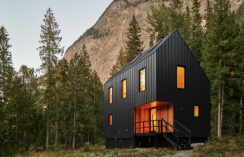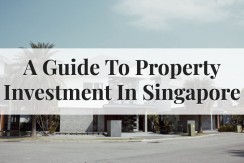The BRRRR Strategy is a way to buy and accumulate passive income properties with little to no capital.
It takes advantage of using the increased equity in one property to finance the purchase of another property, repeating the process and eventually building up a portfolio of properties.
The gist of the BRRRR strategy works like this:
1. BUY an undervalued or distressed property
2. RENOVATE it and bring up the value
3. RENT it out
4. REFINANCE the property, then borrow against, (at it’s increased value) so you can;
5. REPEAT the process starting at #1
In this article we review 5 great tips to successfully implement the BRRRR strategy. To learn about the BRRRR strategy in depth, review How to Finance a Property with Little to No Capital: The BRRRR Strategy in Real Estate.
1 - Find a Property Below Market Value
The first and most important step of the BRRRR process is to find a property for sale at a discount.
This may require you to make multiple lowball offers until you find a motivated seller who accepts.
Consider running online advertisements, ads in the local newspaper or sending traditional postage mail telling people you are interested in buying a home in their neighborhood.
Be patient and be sure to have a strong understanding of the market you wish to invest in.
Traditionally people find homes for sale on the MLS, you will need to get more creative and use websites like HomePath and HomeSteps to find distressed properties.
You can also check bank or county auction websites for great deals.
Just be warned, these properties come as is, and usually have some major problems that you will need to fix.
2 - Calculate Your Carry Costs Accurately
Carry costs, aka holding costs are the costs of owning a piece of real estate during the rehab process.
If you are renovating a property, before you can sell it or rent it out, there is a period of time where you don’t make any revenue back from the property.
Financing payments, insurance, HOA dues, maintenance, marketing fees, utilities and property taxes all add up to cost you money while your property is being renovated or sitting on the market waiting for a buyer or renter.
The average time to flip a house from start to finish is about 6 months nationwide.
It is recommend you add up at least 6 months of carrying costs to cover the time you will be renovating.
If you are feeling uncertain about how long your renovations will take or how long it will be to find a renter you could increase this to 7 to 9 months.
The bottom line is you want to be as precise as possible about what these costs are so you don’t run out of money if your fix and flip takes too long to complete or sell.
3 - Use the 70% Rule
The 70% rule in real estate states an investor should pay no more than 70% of the after repair value minus the renovation costs.
The calculation works like this:
70% ARV MINUS estimated repair costs EQUALS initial purchase price
This rule protects you in case things go wrong in the market or your renovations cost substantially more than you bargained for.
4 - Avoid Overleveraging Yourself
The BRRRR process enables real estate investors to take on multiple deals with little money down and borrowing from lending institutions like big banks and credit unions with high LTV ratios (loan to value ratios).
This leaves the investor susceptible to a downturn in the real estate market and if rents are unable to cover the operating costs of the property then you might risk losing the property to foreclosure.
Another risk occurs if the loans are variable interest rate loans.
For the past decade, real estate investors have been able to benefit greatly from low interest rates.
However, if interest rates were to rise in the future and the borrower has a variable rate interest loan they will be subject to paying a substantial increase in monthly mortgage payments.
Avoid this risk via always getting fixed rate mortgages, even if the payments are slightly higher than a variable rate mortgage.
5 - Network to Find Great Contractors and Lenders
Use friends, family and neighbors to find reputable contractors and lenders.
It’s best to get three references to ensure you are getting a fair deal.
Always be wary of any lowball offer, as this person may be cutting corners with cheap material or under skilled labourers.
For any first time investor, the most difficult part of the BRRRR process is getting the financing in the first place.
Whether it be finding a hard money lender or a small bank or credit union to refinance, you will generally need a few go to contacts if you are in this game for the long term.
Conclusion
The BRRRR method has created many millionaires, especially over the last decade (due to low interest rates).
Like any business you can lose as well as gain in the real estate game and one needs to execute efficiently and with precision in order to make the biggest profit.











Author
Russ Barneson